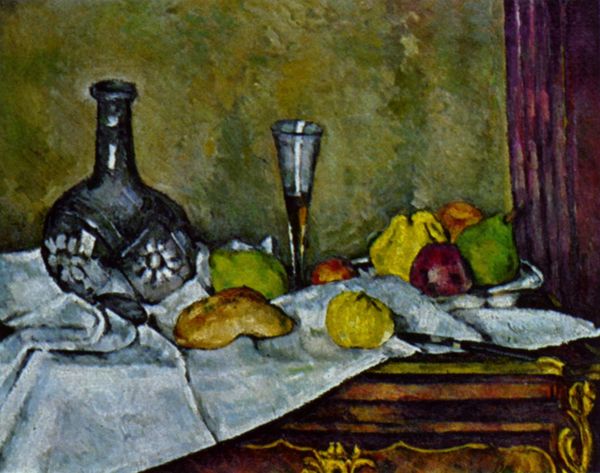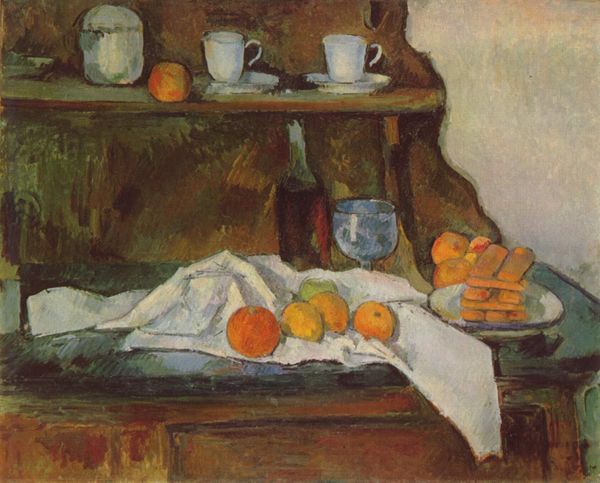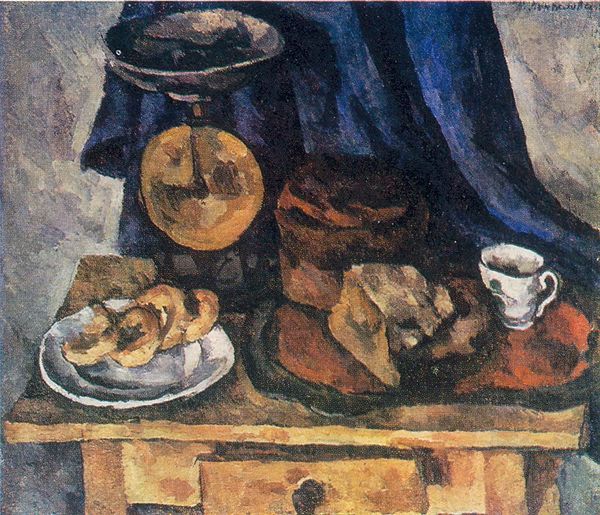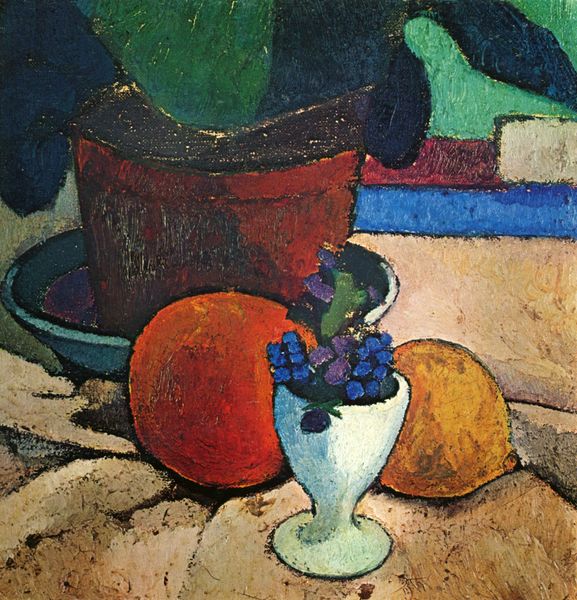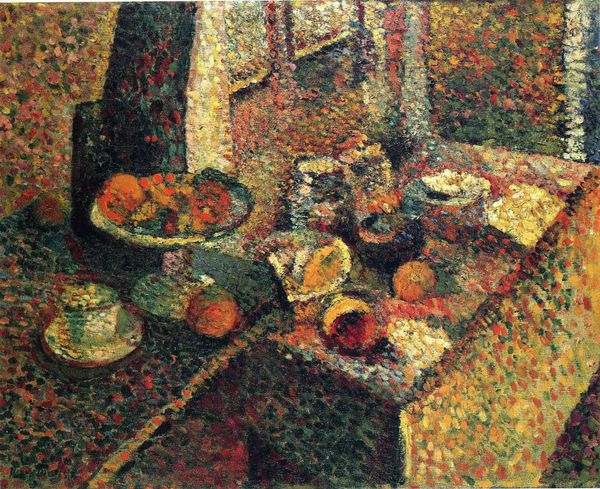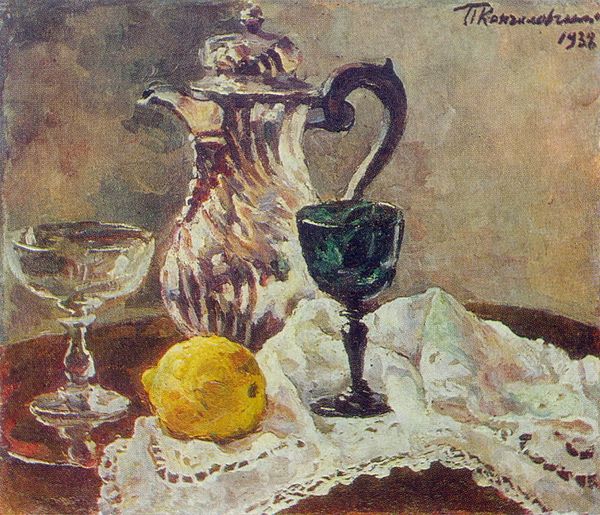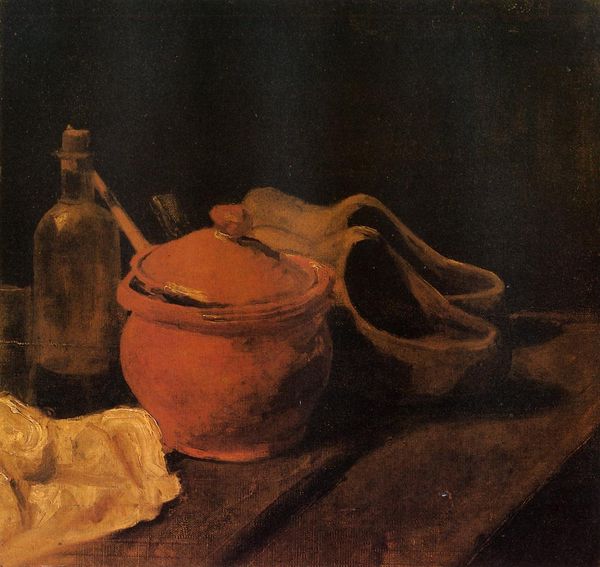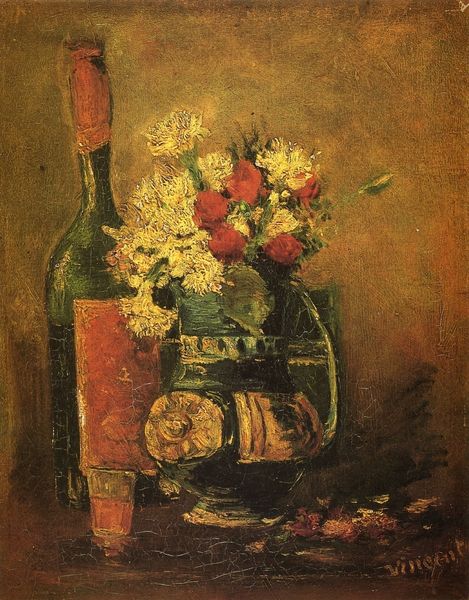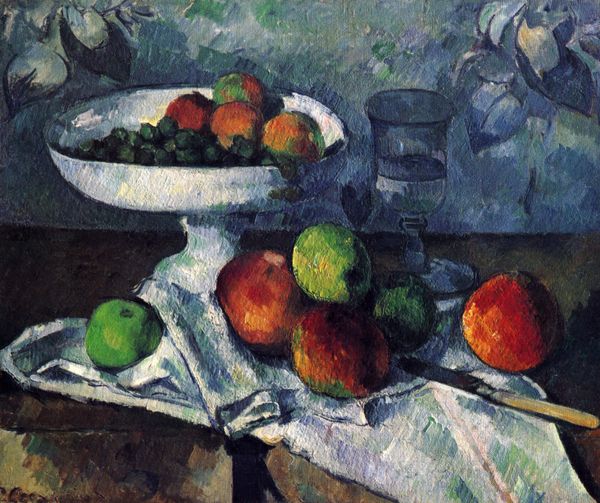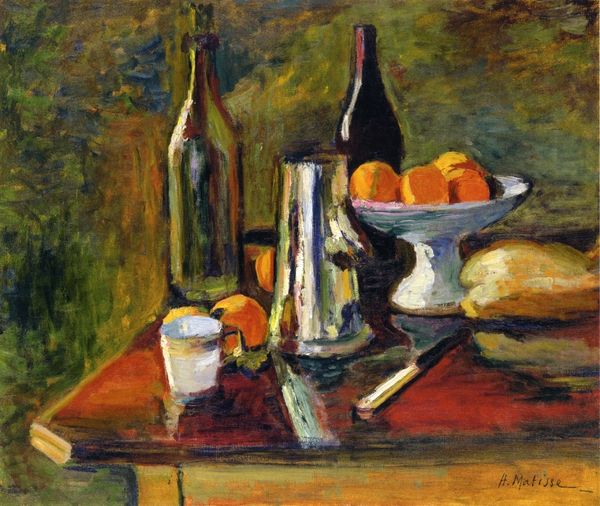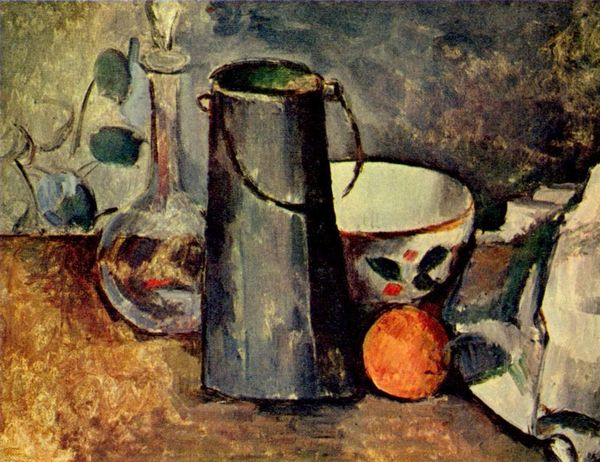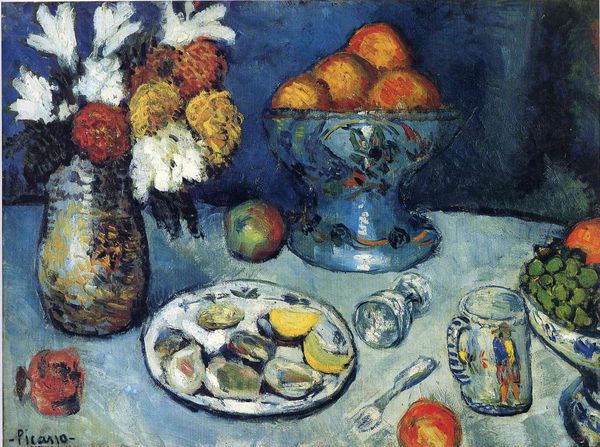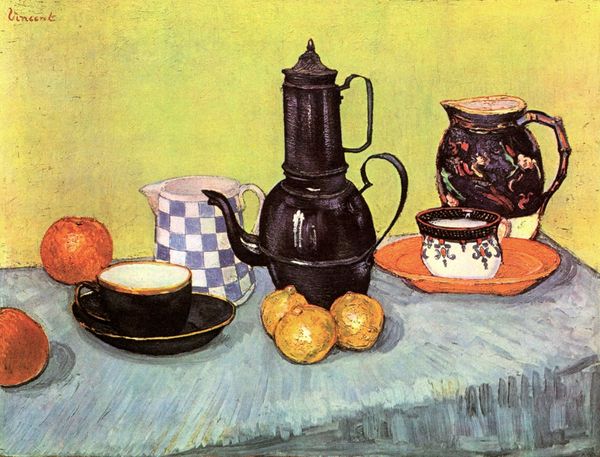
oil-paint
#
still-life
#
still-life-photography
#
oil-paint
#
oil painting
#
geometric
#
modernism
#
realism
Dimensions: 36.2 x 47 cm
Copyright: Pyotr Konchalovsky,Fair Use
Curator: Pyotr Konchalovsky's "Still Life. The Green Glass," painted in 1933, presents us with a restrained composition of domestic objects, currently housed in the Tretyakov Gallery in Moscow. Editor: My first impression is of quietude. The subdued palette and careful arrangement evoke a sense of stillness, a moment captured in time through the interplay of light and form. Curator: Indeed. Konchalovsky painted this during a time of considerable upheaval in the Soviet Union, when everyday life became the subject of artistic investigation. Consider the careful rendering of the lemon—does it function as a subtle comment on scarcity, or a signifier of enduring beauty amidst hardship? Editor: That’s a compelling reading. Looking closely, the geometric planes of the green glass and the textured surface of the metal jug contrast beautifully with the delicate, porous lace. It's through these visual relationships that Konchalovsky builds a compelling discourse around form. I wonder about his process for selecting the objects; did they have meaning? Curator: Given the historical moment, the selection is fascinating. While seemingly mundane, objects like glassware, fruit, and intricately patterned cloths represented elements of bourgeois life, raising questions around privilege during the construction of a "classless" society. In reality, not a classless society for many. Editor: True. But the brushstrokes themselves possess such a vibrant texture that it almost abstracts the objects into pure shape and colour. Even in a still life, there's such vibrancy! Curator: Absolutely, but it doesn't resolve into abstraction—the painting negotiates both Realist and Modernist concerns. It captures the material realities of the objects while quietly engaging with Modernist form. The "stuff" that the Soviet people coveted after a tumultuous past is still on display here. It makes you think. Editor: Konchalovsky’s manipulation of light, in terms of tone and texture, is extremely skilled. He's arranged something incredibly powerful that draws a lot of attention to these items as purely items, not as relics of a bygone era. Curator: Exactly. Konchalovsky pushes us to ask how material culture relates to history and the personal experience of Soviet citizens during that period. Editor: It all goes to show that the smallest of canvases can contain a wealth of material—literally and figuratively! Curator: Precisely. In viewing, we too are actively shaping that history by looking and contemplating the work of the past, and understanding how that informs the now.
Comments
No comments
Be the first to comment and join the conversation on the ultimate creative platform.
